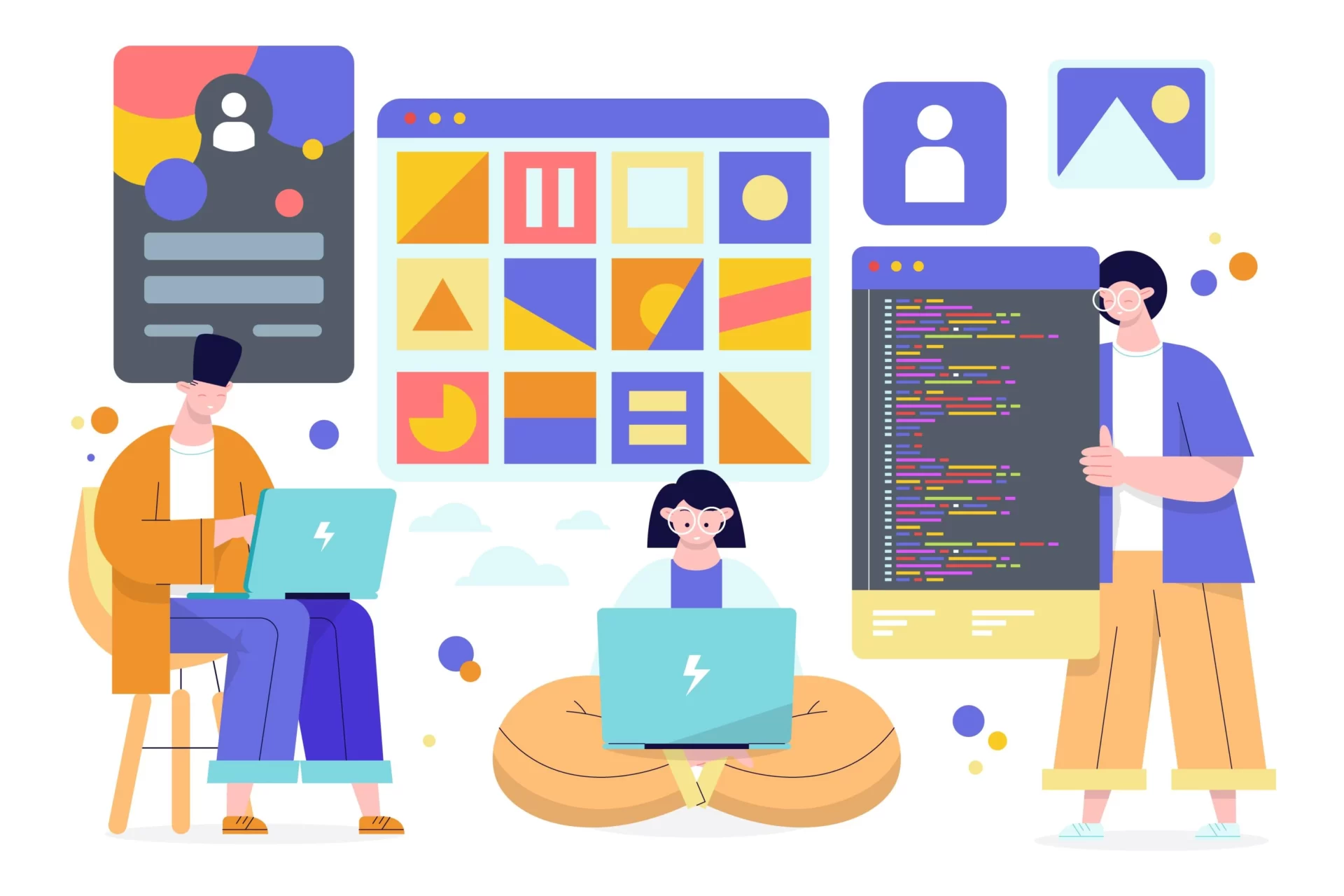Web development is a dynamic field, constantly evolving to meet the needs of an increasingly diverse user base. One of the key aspects of this evolution is the focus on inclusive web development, a practice that ensures websites and web applications are accessible to all users, regardless of their abilities or disabilities. This blog post aims to provide a comprehensive guide to the standards and guidelines that govern web accessibility.
Understanding Web Accessibility
Before we delve into the specifics, it’s essential to understand what web accessibility means. In simple terms, web accessibility refers to the practice of making websites and web applications accessible to everyone, including people with disabilities. This includes visual, auditory, physical, speech, cognitive, and neurological disabilities. The goal is to provide equal access and equal opportunity to all web users. (source)
The Importance of Web Accessibility
Web accessibility is not just a matter of compliance or ticking off boxes in a checklist. It’s about inclusivity, equality, and respect for all users. By ensuring your website is accessible, you are ensuring that everyone, including people with disabilities, can access your content, products, or services. This not only broadens your audience reach but also enhances your brand’s reputation as an inclusive and socially responsible entity.
Web Content Accessibility Guidelines (WCAG)
When it comes to web accessibility, the Web Content Accessibility Guidelines (WCAG) are the gold standard. Developed by the World Wide Web Consortium (W3C), these guidelines provide a set of recommendations for making web content more accessible to people with disabilities. (source)
Overview of WCAG 2.0, 2.1, and 2.2
The WCAG is a series of documents that provide detailed explanations and examples of how to make web content accessible. The guidelines are organized into three versions: WCAG 2.0, WCAG 2.1, and the latest, WCAG 2.2. Each version builds upon the previous one, adding new guidelines to address emerging web technologies and user needs.
WCAG 2.0, released in 2008, provides 12 guidelines organized under four principles: perceivable, operable, understandable, and robust. Each guideline has testable success criteria, which are rated at three levels: A, AA, and AAA.
WCAG 2.1, released in 2018, adds 17 additional success criteria to address mobile accessibility, people with low vision, and people with cognitive and learning disabilities.
The WCAG 2.2 draft, expected to be finalized in 2021, proposes additional success criteria to improve accessibility for people with cognitive and learning disabilities, people with low vision, and users of mobile devices. (source)
How WCAG Applies to Inclusive Web Development
WCAG guidelines play a crucial role in inclusive web development. They provide a roadmap for developers and designers to create web content that is accessible to all users. By adhering to these guidelines, developers can ensure that their websites and web applications are not only compliant with international standards but also genuinely accessible and usable for all.
Authoring Tool Accessibility Guidelines (ATAG)
Beyond WCAG, there are other guidelines that contribute to inclusive web development. One such set of guidelines is the Authoring Tool Accessibility Guidelines (ATAG). These guidelines focus on making the tools used to create web content – such as content management systems and HTML editors – accessible. (source)
Understanding ATAG
ATAG consists of two parts. The first part provides guidelines on making the authoring tool itself accessible. This means that the tool should be usable by people with disabilities. The second part provides guidelines on how authoring tools should help developers produce more accessible web content. For instance, an authoring tool should provide features that assist in producing accessible content, such as automated accessibility checks and prompts for alt text when images are inserted.
Role of ATAG in Inclusive Web Development
ATAG plays a significant role in inclusive web development by ensuring that the tools used to create web content are accessible. This means that people with disabilities can participate in the creation of web content, further promoting inclusivity. Additionally, by helping developers create accessible content, ATAG contributes to the overall accessibility of the web.
User Agent Accessibility Guidelines (UAAG)
The User Agent Accessibility Guidelines (UAAG) serve as another pillar of web accessibility. These guidelines focus on making user agents – software that retrieves and renders web content, such as web browsers and media players – accessible to people with disabilities. (source)
What is UAAG?
UAAG provides guidelines on how user agents should support accessibility. This includes how user agents should support accessibility APIs, how they should implement keyboard navigation, and how they should provide user control over content rendering. By adhering to UAAG, developers of user agents can ensure that their software is accessible to all users.
UAAG’s Contribution to Inclusive Web Development
UAAG contributes to inclusive web development by ensuring that the software used to access web content is accessible. This means that people with disabilities can use these user agents to access and interact with web content, further promoting the inclusivity of the web.
Technical Specifications for Inclusive Web Development
In addition to the guidelines provided by WCAG, ATAG, and UAAG, there are also technical specifications that developers should be aware of when aiming for inclusive web development. These specifications provide technical details on how to implement accessibility features.
Accessible Rich Internet Applications (WAI-ARIA)
Accessible Rich Internet Applications (WAI-ARIA) is a technical specification that provides a framework for making web content and web applications more accessible. This is especially important for dynamic content and advanced user interface controls developed with Ajax, HTML, JavaScript, and related technologies. (source)
Audio and Video AccessibilityStandards
Audio and video content on the web also needs to be accessible. This includes providing captions for videos, descriptions for audio content, and ensuring that media players are accessible. The Web Video Text Tracks (WebVTT) format is a standard for providing captions and subtitles for HTML5 video, while the Timed Text Markup Language (TTML) is used for exchanging timed text information. (source)
Evaluating Web Accessibility
Once you’ve implemented web accessibility features, it’s important to evaluate your website or web application to ensure it’s truly accessible. The W3C provides resources to support the development of accessibility evaluation methods and tools.
Accessibility Conformance Testing (ACT)
Accessibility Conformance Testing (ACT) is a framework for automating unit tests for accessibility. ACT rules help ensure that web content is accessible and complies with the WCAG. (source)
Evaluation and Report Language (EARL)
The Evaluation and Report Language (EARL) is a machine-readable format for expressing test results. It’s used in combination with other formats to provide a complete picture of an accessibility evaluation. (source)
Future of Web Accessibility: WCAG 3
Looking ahead, the W3C is currently working on WCAG 3, the next generation of accessibility guidelines. While still in draft form, WCAG 3 aims to be more flexible and adaptable than its predecessors, making it easier for developers to create accessible web content as technologies evolve. (source)
Introduction to WCAG 3
WCAG 3 is being designed to be easier to understand and use than WCAG 2. It will include a wider range of techniques for achieving accessibility, and it will be more flexible in allowing developers to choose the techniques that best fit their specific situations.
How WCAG 3 Will Impact Inclusive Web Development
With its focus on flexibility and adaptability, WCAG 3 is expected to have a significant impact on inclusive web development. It will provide developers with more options for making their web content accessible, and it will make it easier to incorporate accessibility into a wider range of web technologies.
Conclusion
Inclusive web development is about ensuring that everyone, regardless of their abilities or disabilities, can access and use web content. By understanding and implementing web accessibility standards and guidelines, developers can create websites and web applications that are truly inclusive. As web technologies continue to evolve, these standards and guidelines will continue to play a crucial role in ensuring the inclusivity of the web.
The Role of Web Accessibility in Inclusive Web Development
Web accessibility is at the heart of inclusive web development. It’s about more than just compliance with standards – it’s about respecting the rights of all users to access and use web content. By implementing web accessibility features, developers can ensure that their websites and web applications are truly inclusive.
Future Trends in Inclusive Web Development
As we look to the future, we can expect to see acontinued focus on inclusive web development. With the advent of WCAG 3 and ongoing advancements in web technologies, developers will have more tools and resources at their disposal to create truly accessible web content. (source)
Frequently Asked Questions
What is inclusive web development?
Inclusive web development is the practice of creating websites and web applications that are accessible to all users, regardless of their abilities or disabilities. This includes considering factors such as color contrast for users with visual impairments, keyboard navigation for users with motor disabilities, and clear, concise content for users with cognitive disabilities.
What are the key web accessibility standards and guidelines?
The key web accessibility standards and guidelines include the Web Content Accessibility Guidelines (WCAG), the Authoring Tool Accessibility Guidelines (ATAG), and the User Agent Accessibility Guidelines (UAAG). These guidelines provide a framework for creating accessible web content and applications.
What is WCAG 3 and how will it impact inclusive web development?
WCAG 3 is the next generation of the Web Content Accessibility Guidelines. While still in draft form, it aims to be more flexible and adaptable than its predecessors, making it easier for developers to create accessible web content as technologies evolve. It’s expected to have a significant impact on inclusive web development by providing more options for achieving accessibility.
References
For more information on web accessibility standards and guidelines, you can visit the following resources:


